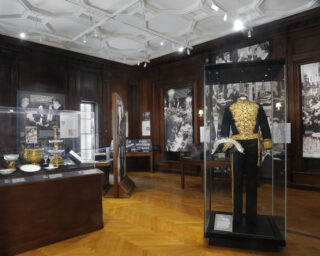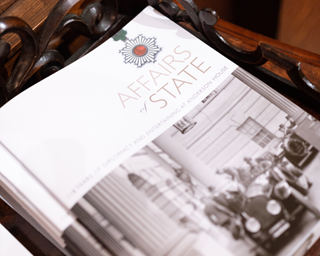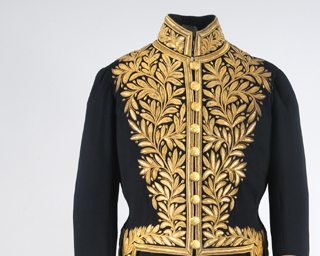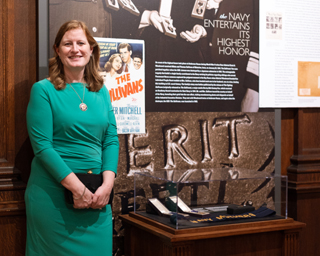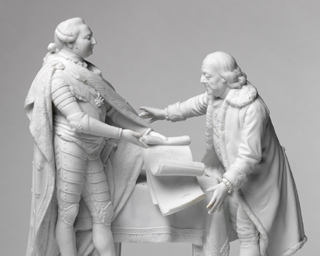Diplomacy and entertaining have always gone hand in hand in the nation’s capital. Anderson House, the headquarters of the Society of the Cincinnati, has played a historic role in that story during the twentieth and twenty-first centuries—but one that has largely gone untold. Since its opening in 1905, the mansion has been the site of hundreds of diplomatic, patriotic, philanthropic and cultural events—establishing Anderson House as a uniquely sought-after destination in Washington, D.C., for heads of state, government officials, diplomats and society leaders wanting a place to form relationships, consider challenges and share common values. Affairs of State chronicled nearly 120 years of the people and events that have given Anderson House its place in the diplomatic and cultural history of the American republic and its capital city.
Had you picked up any major newspaper on the East Coast between 1902 and 1905, chances are you would have seen a story about the plans for a palatial new structure being constructed in Washington, D.C. When Larz and Isabel Anderson set about designing a house on the vaunted Massachusetts Avenue—their secondary home but the first they created together—it was planned specifically for entertaining heads of state, government leaders, other diplomats, friends and family in a setting that conveyed the couple’s interests and values. The American diplomat and his wife, an aspiring author, built the mansion to advance their interests in public service and philanthropy. When their guests passed under the porte cochère and entered the marble-lined interiors, they were met with rich symbolism of the couple’s travels, education, ancestry and patriotic service. For more than thirty years, Anderson House served as the temporary residence of foreign heads of state, meeting place of the American Red Cross and base of operations for foreign missions during World War I, as well as the site of private diplomatic and social functions the Andersons hosted. From the first dinner for six that christened the Dining Room on March 29, 1905, to eight hundred guests at inaugural receptions thrown for their friend President William H. Taft, to the dozens of philanthropic events held to support various patriotic or international causes, the Andersons used their home to serve their country and its causes.
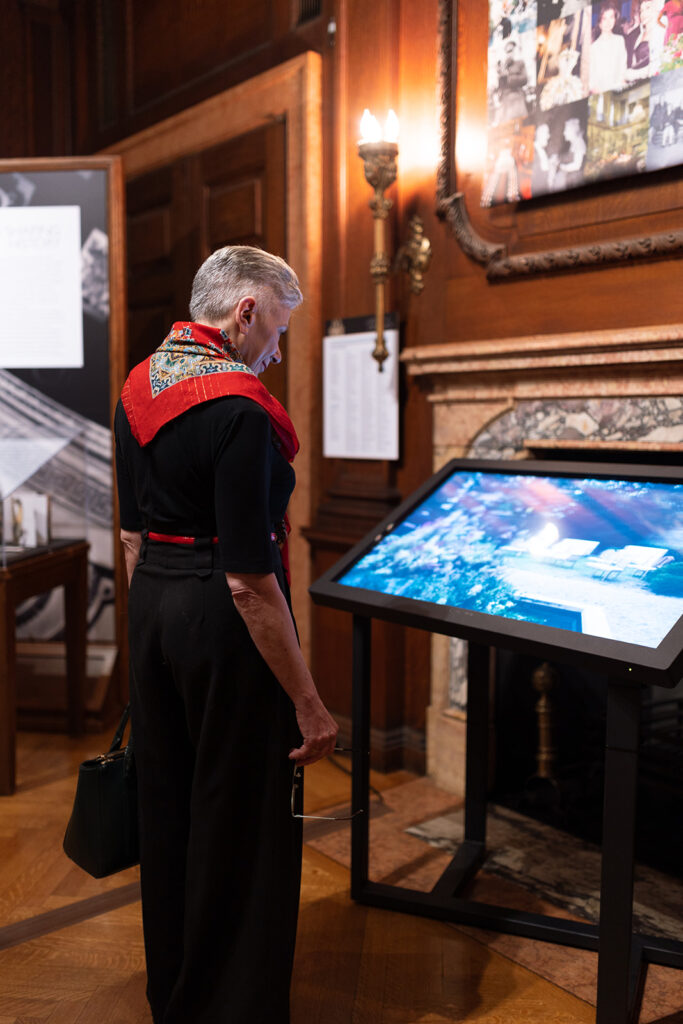
Visitors to the exhibition could watch historical film footage of notable events held at Anderson House from 1917 to today.
Larz Anderson’s last act of patriotic service was to ask his wife to donate their Washington home to the Society of the Cincinnati after his death, which came in 1937. The Society of the Cincinnati is America’s first patriotic organization, founded in 1783 at the end of the American Revolution to keep alive the memory of that vast event which secured our independence. The great grandson of a Revolutionary War officer, Larz had been a devoted member of the Society and had its symbols and history incorporated into the decoration of Anderson House. The Andersons’ gift, formalized in 1938, provided the organization with its one and only headquarters building. Following the Andersons’ civic model, the Society contributed at a time of national crisis when the United States was plunged into the Second World War by lending the building to the U.S. Navy for urgently needed office space. After that conflict ended, the Society allowed official government entertaining in the house for decades, as the need for appropriate space for entertaining heads of state and their representatives was vast. Before the State Department Diplomatic Reception Rooms were established in the 1960s, and even for many years thereafter, Anderson House was a preferred setting for diplomatic entertaining in Washington. Winston Churchill, Thurgood Marshall, Marjorie Merriweather Post, Jacqueline Kennedy and nine American presidents are among the guests who were feted within its doors. These traditions continue today, with Anderson House sought out by government officials, diplomats, journalists, schools, business leaders, civic and cultural organizations and families with an important occasion to mark.
Affairs of State drew on the rich collections of the Society of the Cincinnati and those of several generous lenders—some items displayed for the first time—to explore the breadth of diplomatic, philanthropic and cultural entertaining that has taken place at Anderson House over more than a century. Larz Anderson’s diplomatic uniform, records of Isabel Anderson’s Red Cross activities and pieces from the couple’s dinner settings document the first era of public service at Anderson House in the early twentieth century. Menus, invitations, photographs and media coverage illuminate the scope and style of the wide range of special events held at the mansion in the decades since. Historical film footage of notable events that took place at Anderson House over more than a century illuminate the importance of this house in American history. Among the important objects on loan for the exhibition were two of the five Purple Heart medals awarded posthumously to the Sullivan brothers of Waterloo, Iowa, who were all killed when their ship, the USS Juneau, was sunk during World War II. The U.S. Navy presented the Purple Hearts to the brothers’ parents at Anderson House in 1944, and the two surviving medals remain in the family.
Special thanks to the top supporters of this exhibition:
Mrs. William H. Savage • The Honorable Trevor D. Traina
Jennifer B. London, Ph.D.
Hannah C. Cox • The Honorable Howard H. Leach • Lucy S. Rhame
Anonymous Donor • Daughters of the Cincinnati • The National Society of The Colonial Dames of America • Stephen P. Shaw
Support our Exhibitions
This exhibition was made possible thanks to generous philanthropy. To support this and future museum exhibitions, please click below to make a tax-deductible donation to the American Revolution Institute of the Society of the Cincinnati, Inc.
Donate Now